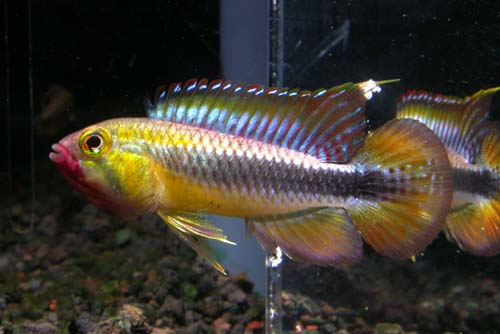At what age do they tend to show sexual maturity?
They start to show maturity around the 3 month mark when fed well. But this is all based on feeding, and the individual species as some species develope slower.
Also I keep meaning to mention this and I get side tracked with other questions.
My current batch of A. sp. Abacaxis is very small. I was keeping them with cherry shrimp in the tank for the adults to eat, and as the fry grow they like to eat the tiny shrimplettes. Well, I began to start having fry randomly dissappear, and I could not figure out why. I finally witnessed what was happening, the cherry shrimp were actively hunting fry. When the mother was not looking they would drop down directly ontop of a fry, and shove it into their mouth and run. Watched this with my own eyes. Once it started the mother began shredding shrimp. I often woke up to shrimp pieces scattered around the tank, however the shrimp still came out victorious. I ended up with only a handful of fry.
To complicate the matter more, I had a heater malfunction on this tank. The heater slowly drifted up to 85 degrees. This however is fine for the fish, it would not cause any deaths, but the fry sex is determined by temperature in the first two months. If it's too hot, you will end up with mostly males.
So basically, I have a very small batch, and I believe they will all be males. I will be lucky to even get one pair from this batch.
However I still do have another batch coming, they were born a few days ago, so for that batch it will be approximately 3 months until they are ready.




